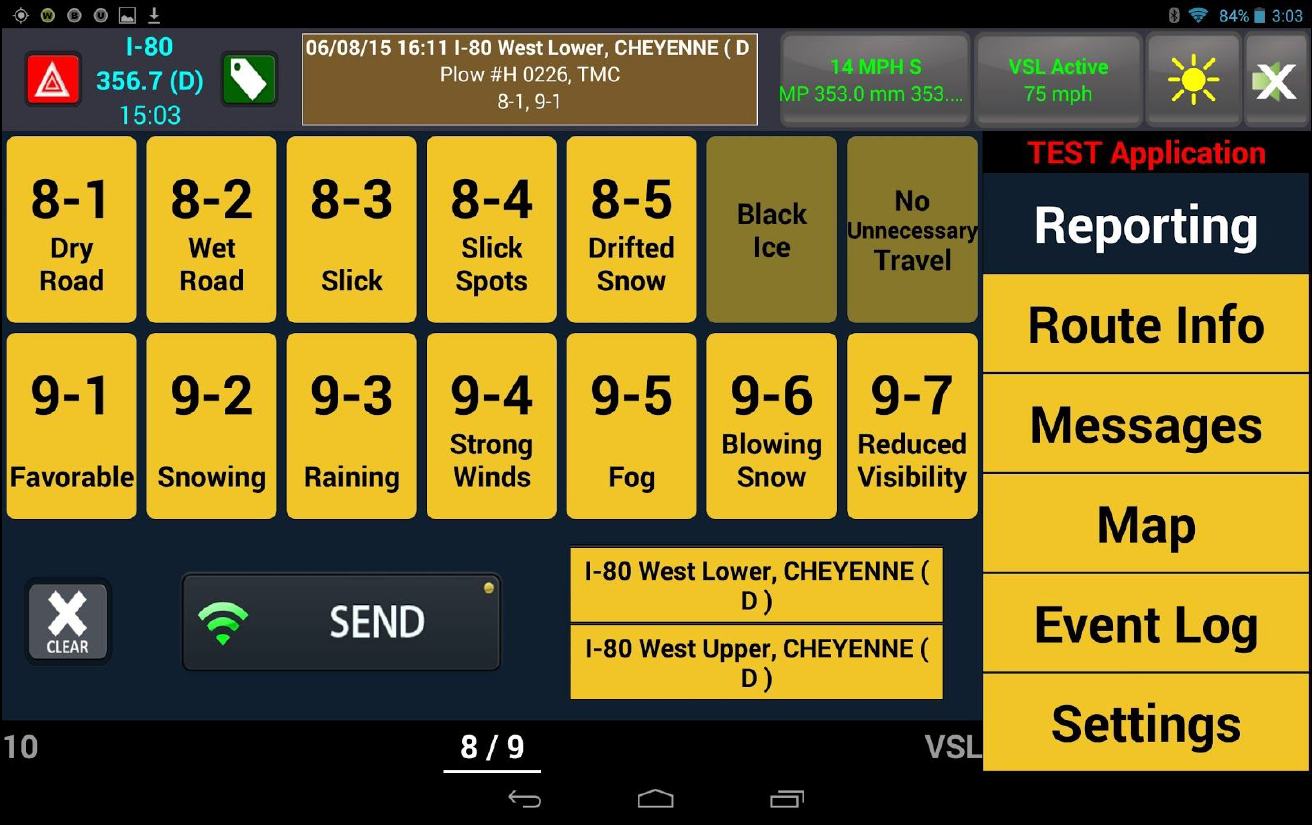
STIC Incentives Drive Innovation
Agencies are solving highway transportation challenges with help from funds offered through the State Transportation Innovation Council (STIC) Incentive program.
“STIC Incentive funds empower agencies to advance innovations that best fit their program needs,” said FHWA STIC Program Coordinator Sara Lowry. “The funds help get good ideas into statewide practice, and the projects often result in resources that can be shared or used as models by other agencies with similar challenges.”
The funding may support innovations from a variety of sources in addition to FHWA’s Every Day Counts program. Past projects include an automated system that improves road condition reporting in Wyoming, a wildlife fencing method for reducing deer-vehicle crashes in Virginia, and a tool for producing standardized plans for local roadway bridges in Wisconsin.
Wyoming Automates Road Condition Reporting
Travelers rely on the Wyoming Department of Transportation (WYDOT) to provide accurate and timely road information so they can make informed decisions. To improve its reporting capabilities for weather-responsive traffic management, WYDOT developed a Road Condition Reporting app. The agency later used STIC Incentive funds to expand the app’s deployment through additional software development and hardware purchases and installation.

WYDOT’s road condition reporting app interface allows staff to provide information directly to the public through the agency’s website, phone system, text and email alerts, and mobile app.
Credit: Wyoming Department of TransportationWYDOT maintenance employees use the application to report road conditions directly to the public through the agency’s website; phone, text, and email alerts; and mobile app without requiring intervention by the agency’s Transportation Management Center (TMC). Staff can also use it to recommend variable speed limits and report common traffic hazards and infrastructure damage.
Employees interface with the app via a computer tablet mounted in vehicles. The system works in locations where cell coverage is not available by using both Wi-Fi hotspots and the State’s WyoLink radio network to send and receive information.
An initial WYDOT study indicated the automated reporting system saves the equivalent of one full-time staff position. The result is that TMC operators can focus on more critical tasks, such as updating roadside devices, while drivers receive more accurate and timely information.
A user survey showed about 80 percent of maintenance personnel and TMC operators believe the agency should continue using the app. WYDOT attributed this deployment success primarily to early efforts to give end users a voice during the development process.
Virginia Evaluates Wildlife Fencing
The Virginia Transportation Research Council (VTRC) applied STIC funds toward a goal of substantially reducing deer-vehicle collisions (DVC) along a busy interstate corridor.
A 2015 VTRC study of two unfenced underpasses along Interstate 64 discovered that, despite frequent use of the unfenced underpasses by deer, there was still a high degree of deer activity along the adjacent roadside and an associated high frequency of DVCs.
The Virginia Transportation Research Council used STIC funds on a wildlife fencing project that is improving safety by substantially lowering deer-vehicle crashes.
Credit: Virginia Department of TransportatioThe VTRC used STIC funding to install wildlife fencing designed to guide wildlife into the two underpasses, as well as trail cameras to verify the system’s effectiveness. The project installed 8-foot-high fencing extending a half mile east and west of each underpass. Jump-outs were placed approximately every quarter mile to give animals trapped within the roadway a safe exit.
In previous years, VTRC recorded an average of seven crashes annually at both underpass sites. In the first year after installation, the new fencing decreased that number to just one crash at each site—a 90-percent reduction.
In a Virginia DOT video on the project, VTRC Associate Principal Research Scientist Bridget Donaldson said the fencing had proven so far to be a low-cost, effective solution for making two problematic stretches of highway safer. After monitoring the sites for 2 years, VTRC reported that the benefits from crash reduction exceeded the fencing costs in 1.8 years, and the fencing resulted in an average savings of over $2.3 million per site.
Wisconsin Develops Bridge Plan Design Tool
The Wisconsin DOT (WisDOT) used STIC funding to develop and implement its Standard Bridge Design Tool (SBDT), which produces standardized plans for the single-span slab bridges most typically used on local roadways. By automating a large portion of the design and drafting work for this type of structure, the SBDT decreases the monetary resources needed within the design phase of relatively simple bridge projects. The agency’s goal is to deliver more bridge replacement projects under the same funding through the overall cost savings.
The WisDOT SBDT functions from a website user interface where the bridge designer inputs seven bridge parameters (span length, bridge width, skew, etc.) based on their preliminary type, size, and location design. Users are then provided with approximately 85-percent designed and detailed final bridge plans. WisDOT reports that relatively minor editing is required of the final plans output by the SBDT, and this is where the design phase savings occur.
The main focus of the SBDT’s use is on local roadways, but WisDOT is leveraging the tool on the State system as well. View the process for using the SBDT in WisDOT’s Standard Bridge Design Tool User Guide.
—MORE INFORMATION
Learn about more projects on the STIC Incentive webpage.
Contact Sara Lowry of the Federal Highway Administration for information on the STIC Incentive program.
Notice: The U.S. Government does not endorse products or manufacturers. Trademarks or manufacturers’ names appear in this article only because they are considered essential to the objective of the document.
Recommended Citation: U.S. Department of Transportation, Federal Highway Administration - Washington, DC (2022) Innovator Newsletter, May/June 2022, Volume 15 (90). https://doi.org/10.21949/1521808



